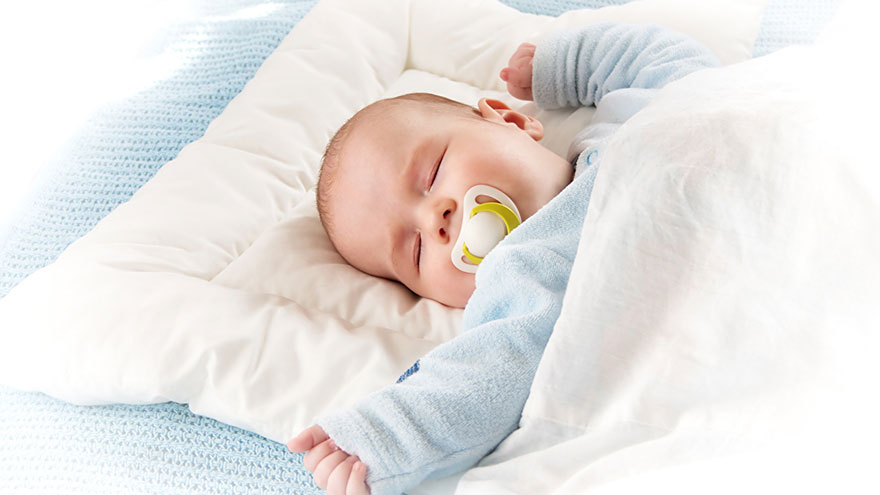Cribs & SIDS Prevention
SIDS is defined as the sudden and unexplainable death in a baby under the age of 1. This is the leading cause of death in infants under 1 year of age, according to the University of Michigan Health System.
It is recommended that you place your baby on her back to sleep, in addition to carefully choosing a safe crib, since the overall rate of SIDS has decreased by more than 50 percent since the practice of back sleeping became commonplace, according to the National Institute of Child Health and Human Development.

How to Choose a Crib
The most important thing is to choose a crib that meets current safety standards. In June 2011, it became illegal to sell or manufacture cribs with drop sides.
These standards also require stronger parts to be included with all cribs, which reduces the chance of anything breaking.
Select a crib with slats that are less than 2 3/8 inches apart, because anything further apart could trap the infant’s head, according to the American Academy of Pediatrics. If you must use an older crib, make sure that it is equipped with hardware that locks the side rails into place.
Assembling and Using the Crib
Before assembly, check to see if a recall has been issued on the crib for any reason.
Read the instructions, since failure to assemble the crib properly could create unnecessary danger. If the crib is missing any pieces, return it to the store for an entirely new unit; it isn’t worth trying to replace pieces. If you hang mobiles or other toys, make sure that your baby cannot reach them, as this could hinder his breathing.
Keep the crib away from things like drapes and blinds, since the infant can get caught up in the cord. Buy a firm mattress and always place your infant on his back when sleeping, suggests the AAP.
Keep the Crib Empty
Do not put anything in the crib besides your baby and possibly a lightweight blanket — but only if it’s tucked tightly under the mattress.
Avoid placing fluffy padding, pillows or stuffed animals in the crib because they can interfere with your baby’s ability to breathe. Also, avoid using bumper pads; although they can prevent your baby from bumping her head, they bring about an added suffocation risk.
You can offer your baby a pacifier before she sleeps, as this can reduce the chance of SIDS, says MayoClinic.com. The pacifier simply falls out of your baby’s mouth once she falls asleep.
Portable Cribs
When traveling, it can become more difficult to keep your little one safe. If he is using a playpen while on vacation, do not lower the mesh on the side while he’s sleeping, as he could become trapped and suffocate.
If you use a crib at a hotel, inspect it carefully because it is certainly possible that the hotel’s crib isn’t up-to-date with the latest safety standards. In these cases, bringing a portable crib with you is often the best alternative.
You Might Also Like : About Portable Cribs
Check out the video version of this article on YouTube

